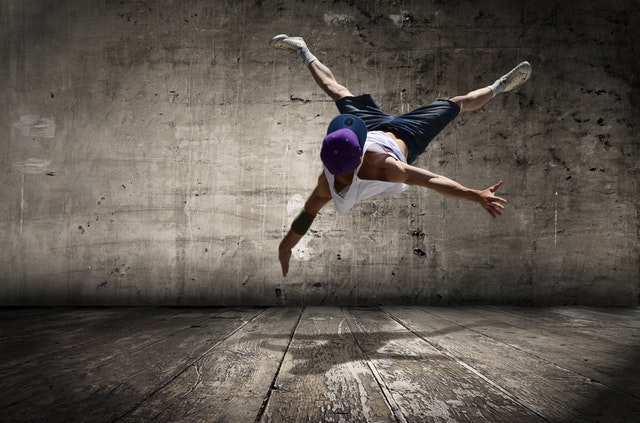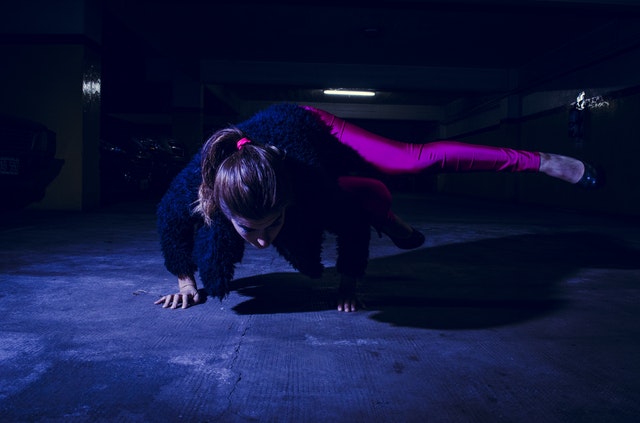
Setting dance choreography can be a daunting task. Whether you are a new or seasoned choreographer, you may find yourself at a creative block during some part of the process. These are perfect opportunities to be daring and think outside of the box!
Use whatever challenge you are facing to create something new. Choreographing is a work of passion and expression that can be rewarding despite difficulties that may arise.
Often times when people think of dance, they may imagine traditional ballet and jazz dance. In these more traditional forms, the choreography may follow the music exactly and use a structure such as ABA – theme, variation on the theme, and repetition of the theme.
However, if you are choreographing in these genres or another one altogether, breaking this mold can provide satisfying results.
The elements of dance include shape, space, time, and energy. These are important to consider when creating movement for your piece.
Different use of these elements can produce varying results when choreographing. Be conscious and aware of how you use them – they can open up doors and also cause our creative process to come to a standstill. Use them wisely!
Here are some choreographic ideas to get your creative juices flowing:
1. Choreograph in a non-linear fashion.
Instead of starting at the beginning and plowing all the way through, why not start in the middle? Or, begin working with several movement phrases and just see where it takes you.
2. Use improvisation as an impetus for movement, phrases, or overall dances.
You can improvise as the choreographer, or have your dancers improvise for you. Videotaping improvisations can also be very helpful. If you love improvisation or perhaps envision your final work being slightly different each night, you can even integrate improvisation into your piece!
3. Choreograph without music.
If you ever feel stuck choosing music, or you are working with a composer creating an original score, try choreographing without music at first. This will create a dramatically different effect on the relationship between the dance movement and the music. This works particularly well with more ambient, sparse soundscapes.
4. Look at the basic elements of your dance: shape, space, time, and energy.

You can create entire dances based on one element alone, or use these individual elements to create variations on your dance phrases. Step back and brainstorm ideas about each element through writing. Then, explore your ideas through movement.
5. Choose to create a piece outside of the theater, or in a nontraditional space.
You could make a site-specific work in a park, or produce a concert in a black box theater to help break up the frontal monotony of theater dance work. In these nontraditional venues, the audience is often given a new perspective from which to view dance because they are more up close and personal. There is little to no barrier between the dancers and the audience in these settings. The audience may get a 360 degree perspective or simply sit somewhere very close to the dancers.
6. Break your typical movement mold.
If you tend to move a certain way and create dances that all contain similar movement qualities, challenge yourself to create a movement study in ways that oppose your natural habits. You can create an entire piece off of this idea; or, use it as a way to contrast your movement in other choreographic works.
7. Incorporate post-modern dance techniques.
Test your limit of what dance can be. The post-modern dancers of the 1960’s used pedestrian movements such as walking and everyday gestures to make entire pieces. They also incorporated spoken word, video projection, and more.
8. Make your work multi-disciplinary.
If you ever feel stumped for ideas, consider how you can use other art forms or something seemingly completely unrelated to dance to create a new dance work. For example, you could incorporate live music or live painting into the dance. Another idea would be to work with a scientist or anthropologist closely on a topic that interests you to base movement from.
9. Mesh genres.
Have you ever thought about making a hip-hop Nutcracker? You could use modern dance techniques in a musical theater piece, or ballet in a tap number. The possibilities are endless.
10. Use chance methods.
Choreographer Merce Cunningham pioneered this method. There are multiple ways to use chance methods when choreographing. You could roll dice or use the I Ching as he did. Another idea would be to pull ideas, numbers, etc. out of a hat and use that for sequencing, phrasing, or anything else.
11. Consider the end result.
What will the costumes and lighting look like? These are two essential elements that can lend a great deal to the final product. Your movement and ideas may even be inspired by particular costuming and lighting ideas as well, so do not leave them for the very end! They could even be a starting point for an entire dance.
Think of your mind like an open book when you start the choreographic process. Just as a writer may get writer’s block, try to open another door instead of continually trying to open a locked one. This does not mean that you are giving up, but rather trying something new. When we can free ourselves creatively, the rewards are plentiful that we are creating a work that expresses our deepest potentials.